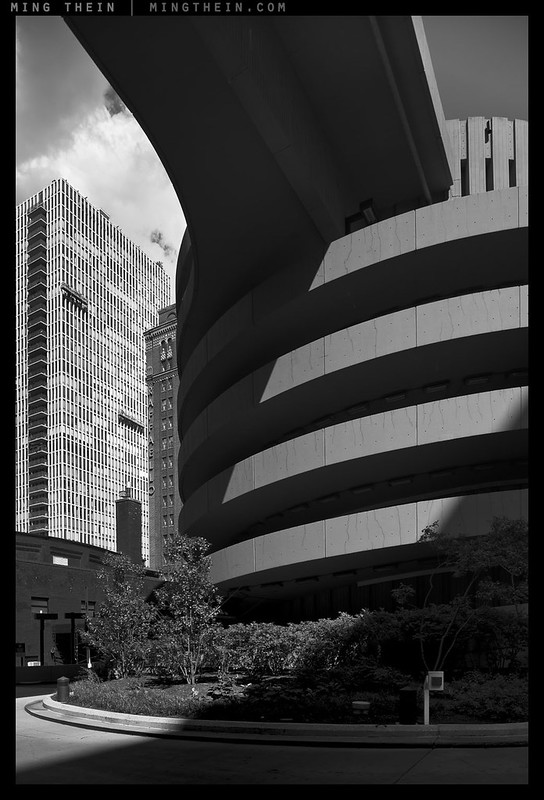
Hancock building parking beehive I
While my students were out completing assignments during the Chicago Outstanding Images workshop earlier this year, I was working on a personal project of my own. I wanted to see how practical it was to shoot fully perspective-corrected architectural work handheld – in decent light, of course. Up til this point, I’d always done this kind of work on a tripod because of the need to use live view. As many of you who’ve tried to use a tripod in general urban situations will know, this isn’t always possible due to property restrictions and city ordinances.
Many of you will also know that modern DSLR viewfinders are really not up to the task of critical manual focus, especially not with cameras of D810-class resolution and lenses like the Zeiss Otus (which are extremely demanding of careful focal plane placement). I’d been looking for a solution to this problem for quite some time, and having tried custom focusing screens/shims/mirror realignment with disappointing results, I finally succumbed to using one of the cinematographers’ finders – a
Zacuto Pro. It attaches to the LCD via an L bracket that screws into the tripod mount of the camera, and used in conjunction with live view (and notably, the much improved live view on the D810) makes it possible to achieve critical focus even in the corners and edges of the frame with a pretty high hit rate even at maximum aperture – I managed ~80% on moving subjects, which is far better than the usual 5-10% with even the custom focusing screen. Aside from allowing critical focus with shallow depth of field, this system also allows for the use of tilt/shift lenses handheld because you are now actually seeing the real result – due to the nature of focusing screen optics, the optical finder does not fully display the tilt/shift effect – and if you’re trying to focus in the corners, forget it.
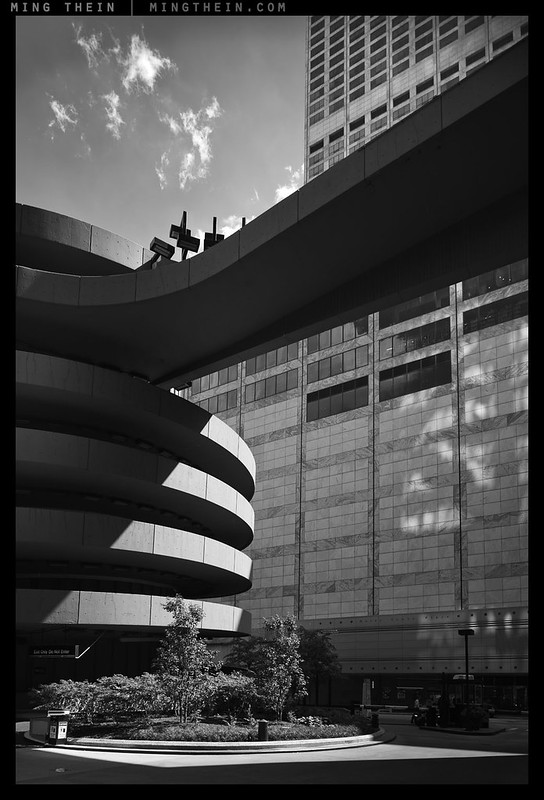
Hancock building parking beehive II
It was an interesting experience to shoot these lenses handheld (and some street photography too, with somewhat less success mainly because keeping the camera perfectly level requires some practice and erodes your speed of response) and made me realise a few things: firstly, it’s entirely doable and opens up new possibilities – especially with shift stitching if you don’t mind sacrificing some of the edges to achieve perfect overlap; secondly, the Nikon 24/3.5 PCE is a rather mediocre lens with poor corners and both pronounce field curvature and focus shift, and serious ergonomic issues – tiny and difficult to reach shift lock screw, anybody? Thirdly, the Nikon 45/2.8 PCE is not bad, but requires care in use with tilting because small increments make an enormous difference. Fourthly, that built in level is extremely useful. All in all: happy with the results, but not so much the optics of the lenses.
Chicago itself made a great test bed both because of the extremely diverse architectural styles and juxtapositions, but also because of its proximity to the lake – I had great light and clouds that would move fast enough that if you didn’t like them, you could wait five to ten minutes and get a completely different set. This photoessay is broken up into two portions: this monochrome series, and a color one. I felt that they need to be presented separately simply because they have a very different feel; one is monolithic and somewhat timeless, and the other more ‘immediate’. You will notice there are also a couple of images here from the 645Z, which does not have any perspective control lenses, but was either held level, or only slightly tilted and corrected in Photoshop afterwards with minimal loss of image quality. Enjoy, and as usual, images are available as Ultraprints on request. MT
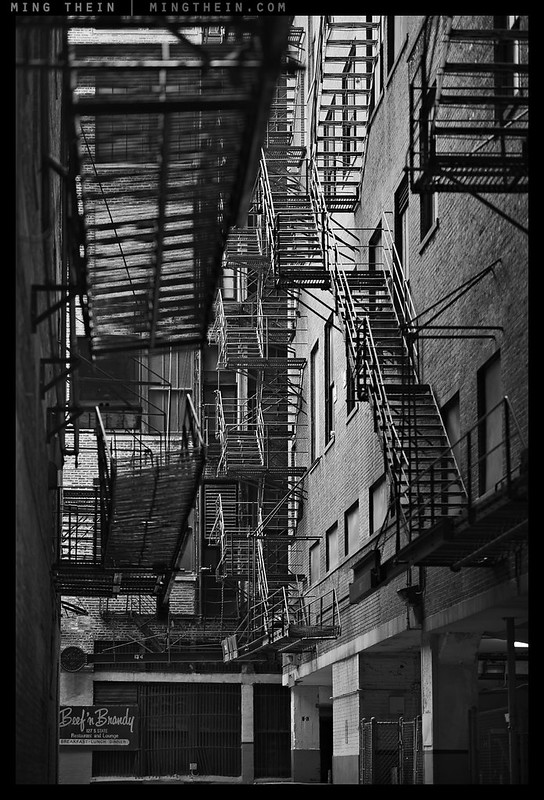
Fire escapes – somehow, how I’d always envisioned a Chicago alleyway…it might have something to do with the number of films that were shot here in the past.
__________________
Take your photography to the next level: 2015 Masterclasses now open for booking in Prague (9-14 Mar 2015) and Lucerne (17-22 Mar 2015)
__________________
Limited edition Ultraprints of these images and others are available from mingthein.gallery
__________________
Visit the Teaching Store to up your photographic game – including workshop and Photoshop Workflow videos and the customized Email School of Photography; or go mobile with the Photography Compendium for iPad. You can also get your gear from B&H and Amazon. Prices are the same as normal, however a small portion of your purchase value is referred back to me. Thanks!
Don’t forget to like us on Facebook and join the reader Flickr group!
Images and content copyright Ming Thein | mingthein.com 2012 onwards. All rights reserved
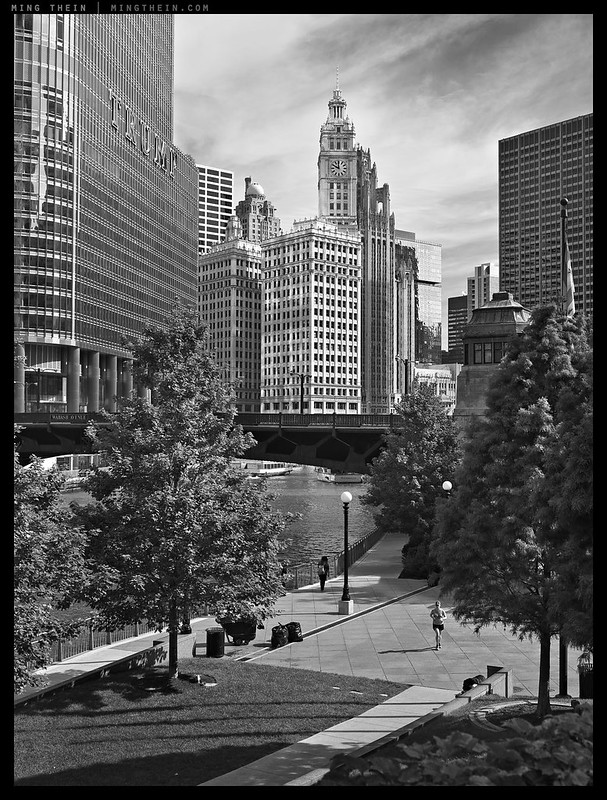


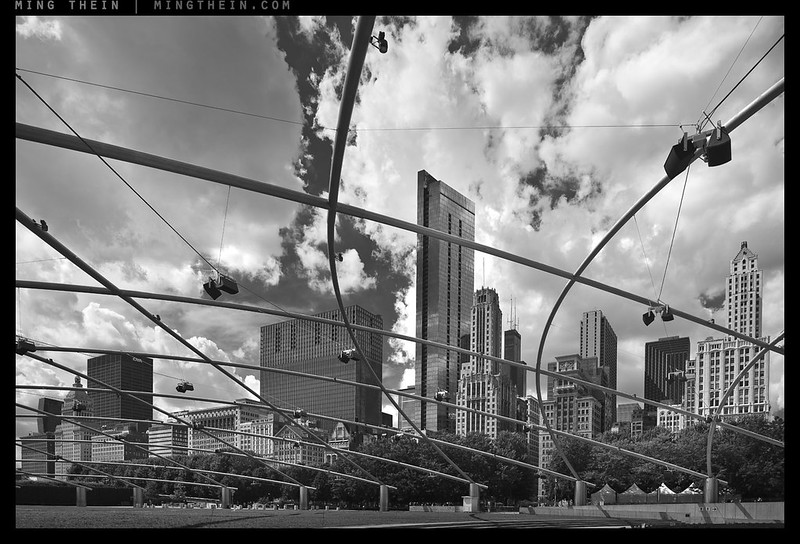
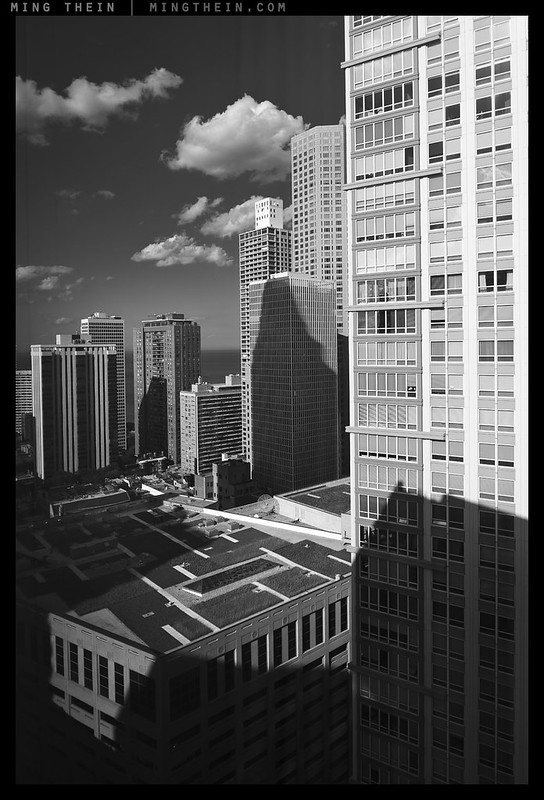
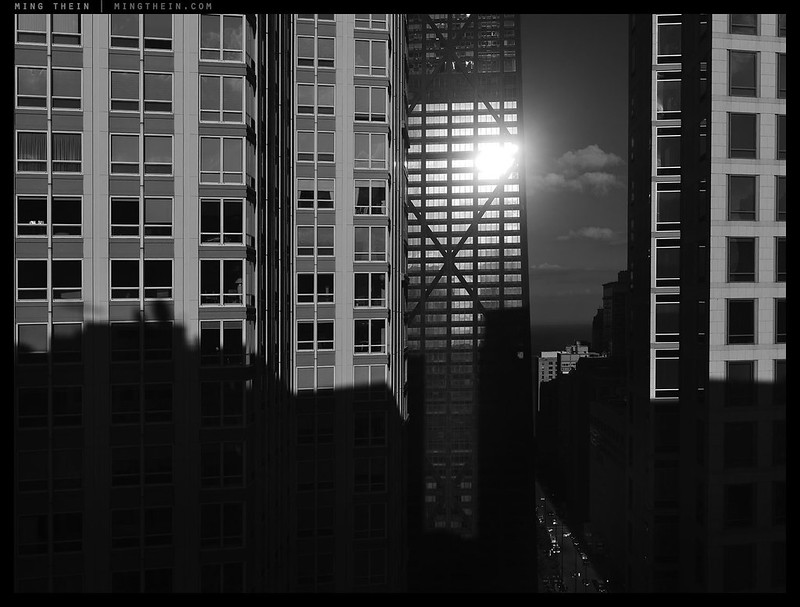
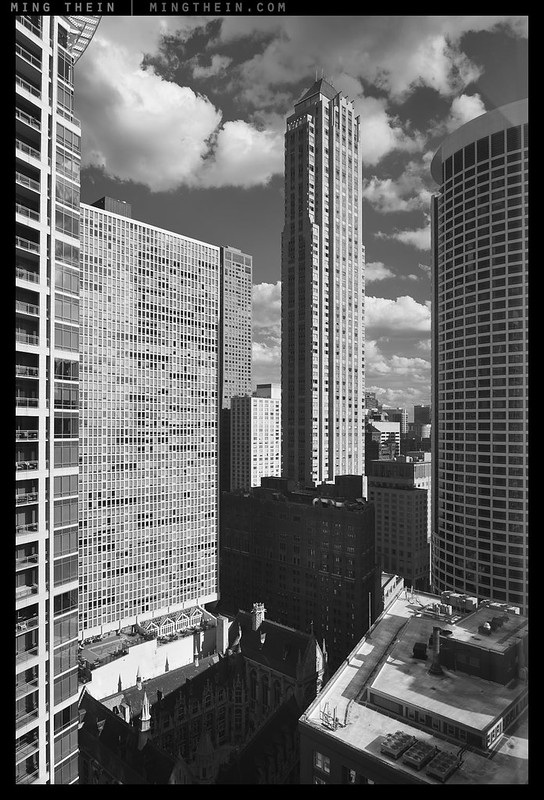






Hello Ming. Looking back at those pictures, a few consideraties popped into my head, that I’d like to share with you. But first, I guess I really must like those pics, otherwise I wouldn’t come back. 🙂 I find them them especially interesting regarding viewpoint and composition. But that aside.
Concerning the subject of the article, I wonder why you’re not promoting the electronic Bie wfinder more. I guess it isn’t because you would loose the optical one, which, with modern equipment (sensors + lenses) you proved to have become obsolete. BTW I don’t understand why so many people stick with it, because eventually our images will be digital, and I believe there’s only advantages to seeing throughout the VF what our image will look like, instead of how the real world looks like. If I wanna see the latter, I just have to open my other eye. So to me, it’s the EVF! When I look at your equipment, with an added Zacuto Pro, It’s again becoming more expensive, but worse: becoming bigger, heavier and more unhandy. Of course, this is how I picture it, because I didn’t try it. So there’s a reservation in my statement here. But I experience my EVF to be better to focus then the LCD. And having it that compact, I can touch my face with my hands, which enhances stability. There’s a lot more contact, between myself and my camera and thus between myself and the image. This, I’m sure, allows yet even more directness in shooting. All those things that you describe here to gain, by shooting in this way, I’m sure you’d gain much more of them when using a camera with EVF. With less weight, less place in your bag, less burden and less money. With more contact, more feel, more ability to react to a moment’s event. And I believe that precisely the registration of a moment is the biggest forte of photography. So your photography would only gain with the use of a more compact EVF. That’s IMO of course.
I completely agree. But there isn’t one. The closest we get is the A7R, which has other issues in quality loss because of file compression and shutter vibration. It’s a false economy if it isn’t actually better…
OK. At this moment it’s about gaining and loosing. In other words, choosing what’s the most important for one’s use and work. That’s a choice everybody needs to make for himself.
But I didn’t refer to any specific camera type. I just referred to the concept of the EVF. I believe that it’s necessary that professionals like you should stimulate every manufacturer to make good work of integrating the EVF. And also stimulate manufacturers to further improve the EVF quality. I think it would be a good idea to mention the advantages of an EVF on every occasion. Like in articles like this…
Sadly, manufacturers do not listen to us. I’ve given up talking to most of them because they refuse to admit that there’s any possibility that they haven’t made the best product possible; never mind the fact that most of the design teams are not photographers and the whole thing is marketing-driven. They just want us to blindly promote their products. The only way things are going to change is if and when people vote with their wallets. That said, I’m not going to buy a compromised product to encourage development in the hope that the next generation might be better – that’s just financially ruinous.
As for articles like this, well, frankly I think few people read them. Most people – and manufacturers – are interested in equipment reviews, not actual photographs. Such is the sad state of ‘photography’ today.
When you say “frankly I think few people read them”, I guess that you refer to “few of the people working for the manufacturers”. I’m totally with you here. BUT you definitely are one of the “opinion makers”. And many buyers read your opinion. In this way you can at the least influence their opinion. If more opinion makers, who you talk from time to time, share this attitude, I’m sure it will influence the public opinion. Maybe not enough. Maybe less than wanted. But I’ve never preferred to do nothing, when the result isn’t optimal, since then the result is guaranteed to be zero. And you are shaking the tree as well on a regular basis, like in your “Open note to camera makers, marketing departments and agencies” from a few days ago – a small article with an avalanche of reactions from the buyers. I think this proves my point.
I try, Dirk, but most of the time I’m either ignored or met with veiled hostility. Honestly. It isn’t worth the stress on my part. I get unfriendly emails from camera companies and unfriendly emails from trolls – the two are self-reinforcing, so who am I to say otherwise? 😛
Reblogged this on Eileen Lyn Wah.
Thanks for the observation on the 24mm f3.5 PCE. That is a lens I have toyed with getting, but wondering about the quality (and the inability to change the relative axes of the tilt and shift without returning it to Nikon). I can think now of others, perhaps the Schneider?
The Schneider is very, very expensive, and early reports aren’t exactly encouraging. The 24 PCE has focus shift and field curvature that interact in strange ways; if you spend some time learning it, the results are fairly decent.
I really like this set, too Ming. The Pritzker Pavillion in particular, because of how you handled the overhead lines. I’ve been trying to avoid the overhead power lines here, but this picture is inspiration for trying to work them into the photo in some way. It looks like they’re used here more as texture instead of framing or leading lines?
Also, unrelated question: for your Zacuto, do you focus at full-view or do you zoom in to 1:1? I find that I have to do 1:1 for accurate focus on lenses like the 55 Otus and 135/2.
Yep, they’re texture and pattern to balance out the bottom portion. I wouldn’t exclude them since they’re a defining characteristic of the subject.
Zacuto: I’ll always check focus at 1:1.
Thanks!
This article is helpful to me. I’ve never used a tilt/shift lens on any camera, film or digital, and have thought about it for my landscape work. I can see that in urban areas, the 2x crop factor of my Olympus system will pose some challenges with adapted tilt/shift lenses. Not so much in more roomy situations where I can get back enough to utilize an effective 50mm field of view but I may wait until I add a larger sensor to my kit, such as a Sony A7 series. I will eventually look around for an adaptable, manual t/s lens with which to practice/learn.
For smaller sensors, there are a range of T/S adaptors by Kipon (though you probably only need shift because of the real FLs, working apertures and distances) that adapt anything with a larger image circle. Beware of wides though, M4/3 has a very thick filter pack that might prove problematic at the edges.
I particularly like the first image (Hancock building parking beehive I) with its near-far scale and interesting tonal range that helps to create a very nice composition… It is a good example of what, in my opinion, B&W work offers that is different at times than color work. The same image in color would maybe be more about the blue sky but in B&W the sky is suppressed and the image reorganizes to create another interpretation.
Thank you. I found the color distracting in a lot of these – you see it rather than appreciating form – so out it went…
Beatuiful images Ming…
Thanks!
Nice set their Ming. I would be delighted to have captured any one of them. All ten being stuff of dreams.
Thanks Ray!
My thoughts exactly. New year’s resolution. Shoot like Ming. ( Some hope!)
Great article, thank you very much. Doesn’t the zacuto just magnified to central portion of the frame ? You mentioned that you could see the corners or have they come out with a new one?
Magnifies the whole thing – I lose perhaps 1mm on the top and bottom of mine. But the newer version one of my students has is perfect.
Hi Ming,
what about the Zacuto Z-Finder EVF Pro ?? Even better than the ordinary one/your used one?
ThX!
Nasim
No idea, there were so many models at the time I bought mine…I suspect they differ only in magnification, attachment method and shape.
About architetural work – have you tried the live keystone correction that Olympus implemented in the last E-M1 firmware update? Of course it will not give results with the same quality of a proper tilt-shift lens, but I’m curious if it could be useful (and did not see proper reviews of this feature yet).
About the pictures: great, as usual. 🙂
Not useful since the image quality compromise is going to be pretty massive…it just stretches the edges. Ricoh has had a ‘document copy mode’ in the GR which works in a similar way for some time.
Also, it only works on in-camera JPEGs, not RAW.
A strong set MT…love Curves, Trump Tower Pedestal especially. I wonder how the new Schneider Super Angulon 28 4.5 stacks up against the Nikon 24…
Thanks Ian. Lloyd seems to be a bit ho-hum about the Schneider…and in any case, it isn’t wide enough most of the time. But it does give you a lot more precise control over movements though.
Hello Ming
A very, very nice set. I too use a shift lens (28mm Pentax) but on a Sony A3000 (Horrors). I use it for the majority of images which are intended for composites, but it is good as a walk about lens, used handheld with the shift set slightly upwards (to reduce the foreground). When I started with it, it only took a hour or so of practice and assessment to get consistantly good enough results for work and hobby purposes. The big help is an evf with a grid function but also the weight which helps steady handholding at relatively high F stops (the lens is an F8 to F22 beasty). I can see from your images you have resisted the ‘perfect verticals’ that many other professional photographers I come across seem to insist upon. Many can look as though the buildings are falling over backwards. Some clients do insist on accurate verticals but as you say very minor post adjustments are possible to convincingly achieve this. Most Architectural practices fall far short on image quality when preparing their design composites and rely on viewing distance and over-sizing to disguise the C**p they put out. My colleagues do seem to appreciate working with an image, or stitched images (takes much more practice) that are perspectively good and crucially with a documented source point, ie distance and approx angle so that design model’s perspectives can be easily set (It can take expensive hours of hit and miss if this is not done). I am looking forward to trying this technique with an Sony A7II when it is available. Again a very nice set.
Thanks! I agree that unrealistic architectural images are criminal…but perhaps it’s because the architectural firms themselves want to see images that look like the CAD renders rather than reality. Or maybe they’ve just spent too long staring at computer screens…
Beautiful Set Ming! Really like them. Looking forward to part II.
Thanks Eric!
A good set Ming, particularly like the last one – as you say its how you imagine a Chicago alleyway to be. The Zacuto Pro also saves needing to surgically process the camera to fit the focusing screen, but the setup does look big. I guess its the price to pay if you want to use the Otus accurately (and Nikon really need to update the 24 PCE…..).
Thanks!